Are you having trouble keeping your houseplants healthy? The answer might be in the soil they grow in. The right potting mix is key to giving your indoor plants the best growing conditions. Let’s start a journey to learn about the important parts of indoor plant care and how to pick the best soil for indoor plants.
Do you know why well-draining soil is so important for your houseplants? Or how the pH levels in your potting mix affect nutrient availability? We’ll answer these questions and more as we explore houseplant soil. Let’s discover the secrets to a thriving indoor garden.
Understanding the Importance of Potting Mix
Choosing the right potting mix is key for your indoor plants. It’s different from outdoor soil. It’s made just for container gardens. Knowing what potting mix does is vital for your plants to do well.
What is Soil and What is its Purpose?
Soil is where plants start their journey. It gives them nutrients, water retention, and aeration. In nature, soil is alive with tiny helpers that turn old plants into food for your plants.
Moisture Retention, Air Circulation, Nutrients, and Structure
For plants in pots, potting mix must mimic soil’s functions but be light and drain well. The best potting mix balances moisture retention, air circulation, nutrient content, and structural support.
Knowing the role of these soil features helps you pick the right potting mix. This way, your indoor plants can flourish in their pots.
The Problems with Using Outdoor Soil Indoors
Using outdoor or garden soil for indoor plants is not a good idea. It might seem cheap and easy to get, but it can harm your plants. Here are the main reasons why you should not use outdoor soil for indoor plants.
Density and Drainage Issues
Outdoor soil is much denser than indoor potting mixes. This density can stop water from draining well and air from getting to the roots. This leads to plants growing poorly and roots having a hard time.
Soil-Borne Diseases and Pest Infestations
Outdoor soil can have diseases and pests that harm indoor plants. Things like fungi and bacteria, and pests like nematodes and insects, can easily move into your indoor garden. These problems are hard to fix and might need a lot of treatment.
For the best environment for indoor plants, use a good potting mix made for containers. These mixes help with drainage, air, and nutrients. They don’t have the problems of outdoor soil. Switching to this can help your plants grow well.
The Breakdown of Potting Media
Creating the perfect potting mix for indoor plants starts with knowing the core components. Peat moss and perlite are the main ingredients. They work together to keep the soil moist, well-aired, and full of nutrients.
Peat Moss and Perlite
Peat moss comes from decomposed sphagnum moss and is great at holding water. It slowly releases moisture to the roots as needed. Perlite is a light, expanded volcanic glass that improves soil aeration and drainage. This prevents waterlogging and ensures good oxygen flow.
Additional Amendments for Absorbency and Structure
Peat moss and perlite are the basics, but adding more can improve the mix. Coconut coir is a green alternative to peat moss, also great for holding moisture. Sphagnum moss can hold up to 20 times its weight in water, adding extra absorbency.
Additional Amendments for Aeration and Drainage
Vermiculite is key for good drainage and air flow. It’s a lightweight mineral that expands to create air pockets in the soil. These pockets help water and oxygen move through the soil. Mixing these ingredients creates a balanced potting mix for your plants.
| Ingredient | Function |
|---|---|
| Peat Moss | Moisture retention |
| Perlite | Aeration and drainage |
| Coconut Coir | Absorbency and structure |
| Sphagnum Moss | Absorbency |
| Vermiculite | Aeration and drainage |
“The key to a thriving indoor garden lies in the foundation of a well-crafted potting mix.”
What Houseplants Need from Soil
Growing indoor plants requires understanding their soil needs. Different plants need different soils. It’s important to choose the right soil for your houseplants. They need soil that drains well, holds moisture, and is rich in nutrients.
For indoor plant growing conditions, the right soil is key. Succulents and cacti do well in soil that drains excess moisture. Ferns and peace lilies prefer soil that keeps moisture but doesn’t get too wet.
All indoor plants need soil rich in nutrients for growth. Adding compost or aged bark to the soil helps. These add nutrients and support healthy growth.
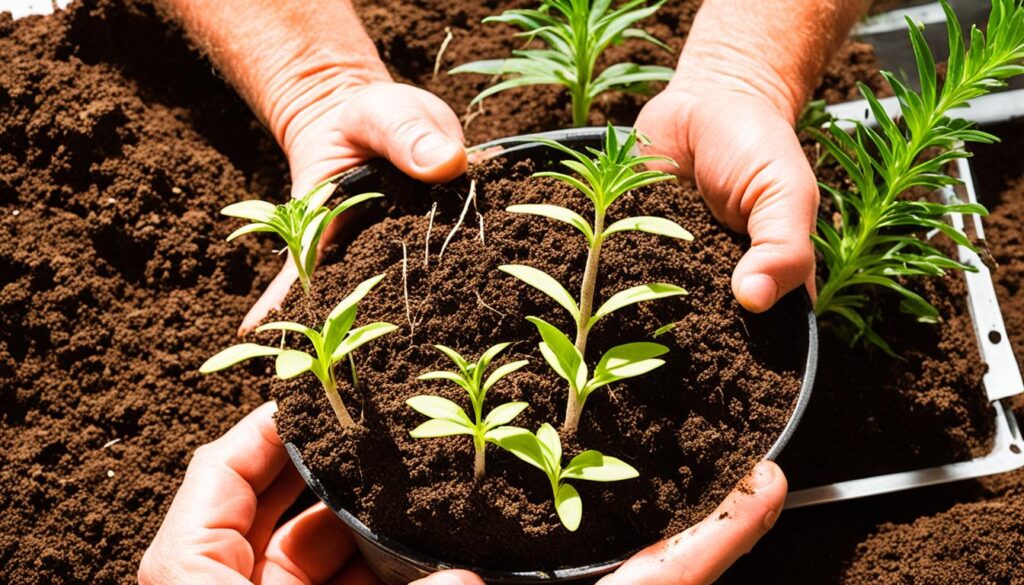
Knowing what your indoor plants need from soil helps them thrive. Whether it’s an orchid or a succulent, the right soil matters. It affects their health and happiness.
“The right soil is the foundation for a thriving indoor garden.”
Popular Potting Mixes for Indoor Plants
Choosing the right potting mix is key for your indoor plants. There are many pre-made options for different houseplants. Let’s look at some popular potting mixes for indoor gardening.
All-Purpose Potting Mix
An all-purpose potting mix works well for many indoor plants, from flowers to greenery. It has peat moss, perlite, and other organic stuff. This mix keeps soil moist, well-aired, and full of nutrients. It’s a good choice for all-purpose potting mix, succulents, or epiphytes.
Cactus and Succulent Mix
Cacti and succulents need soil that drains well and is sandy. A cactus and succulent mix is made just for them. It has perlite, coarse sand, and little organic matter. This mix stops water from pooling and helps your plants grow well.
Epiphyte Mix
Epiphytes like orchids and bromeliads need a special mix. A epiphyte mix has bark, sphagnum moss, and perlite. This mix lets air in and keeps moisture, which epiphytes love.
Looking at the different specialty potting soil and indoor plant growing media can help you pick the best for your plants. With the right mix, your houseplants will do great and look amazing.
Specialized Potting Mixes
As a green-thumbed gardener, you know that not all indoor plants are the same. They have different watering and lighting needs. That’s why specialized potting mixes are key to their growth.
For example, african violet soil is perfect for African violets. It’s light, airy, and drains well to prevent waterlogging. Bromeliad soil is another special mix, offering the right balance of moisture and air for tropical plants.
Plants like azaleas and evergreens need special care too. They do well in ericaceous or acid-based mixes. These mixes help them grow by keeping the right pH level.
For rare or exotic plants, you might want to make your own custom potting mix. This lets you tailor the soil to their specific needs.
The right soil can make all the difference between a thriving houseplant and one that struggles to survive.”
Specialized potting mixes might cost more, but they’re worth it for your plants’ health and happiness. So, if you have African violets, bromeliads, azaleas, or evergreens, try these special soils. Your plants will love you for it!
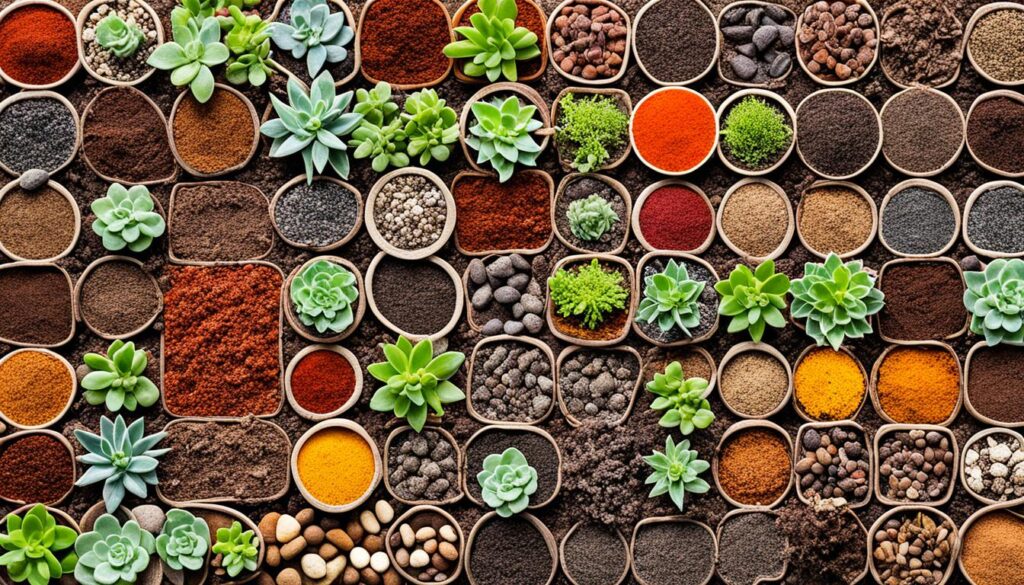
Choosing the best soil for indoor plants
Choosing the right potting soil for indoor plants is crucial. It’s all about matching the soil’s properties to your plants’ needs. The right indoor plant growing media can greatly affect your plants’ health and vitality.
Start by thinking about your plants’ natural habitat and what they need to grow well. Do they like moist, well-draining soil or prefer it dry and airy? Do they need a lot of nutrients or something more simple?
When you match soil to plant needs, your plants get the right balance of moisture, air, and nutrients. This might mean adding things like perlite for better drainage or compost for more nutrients to your potting soil.
“The right soil can make all the difference in the world for your indoor plants. It’s the foundation for their success.”
There’s no single best potting soil for all indoor plants. Each type has its own needs. You’ll need to research and experiment to find the best fit. With some trial and error, you’ll find the right soil for your plants.
By carefully selecting the best soil for your indoor plants, you’ll get a lush, healthy garden. This will make your home more beautiful and peaceful.
Conclusion
Your journey through the world of indoor plant soil has ended, but your plants’ journey is just starting. Now, you know how to pick the best potting mix for your indoor plants. This knowledge lets you create a great place for them to grow.
Choosing the best soil for indoor plants and proper indoor plant care are key to having healthy houseplants at home. Ingredients like peat moss help keep moisture in, while perlite improves air flow. Each part of the potting mix is crucial for your plants’ health and growth.
Keep this knowledge handy as you care for your indoor plants. Try out different potting mixes and see how your plants react. With your new skills, you can give your plants the best soil for a long, healthy, and beautiful life.
FAQ
What is the purpose of potting mix for indoor plants?
Potting mix is made for container gardening. It helps plants grow well indoors by keeping moisture in, letting air flow, providing nutrients, and giving support.
Why should I avoid using outdoor soil for indoor plants?
Outdoor soil is too heavy and can block water flow and air. It also might have diseases and pests that harm indoor plants.
What are the key ingredients in a quality potting mix?
Peat moss and perlite are key in a good potting mix. They help with keeping moisture, letting air in, and supporting the plant. Coconut coir, sphagnum moss, and vermiculite can be added for extra benefits.
How do I choose the best soil for my indoor plants?
Pick a potting mix that fits your plant’s natural home and needs. Look for the right mix of moisture, nutrients, and air for your houseplants.
What are some popular pre-made potting mixes for indoor plants?
Popular potting mixes include all-purpose, cactus and succulent, and epiphyte mixes. These are made for different types of houseplants.


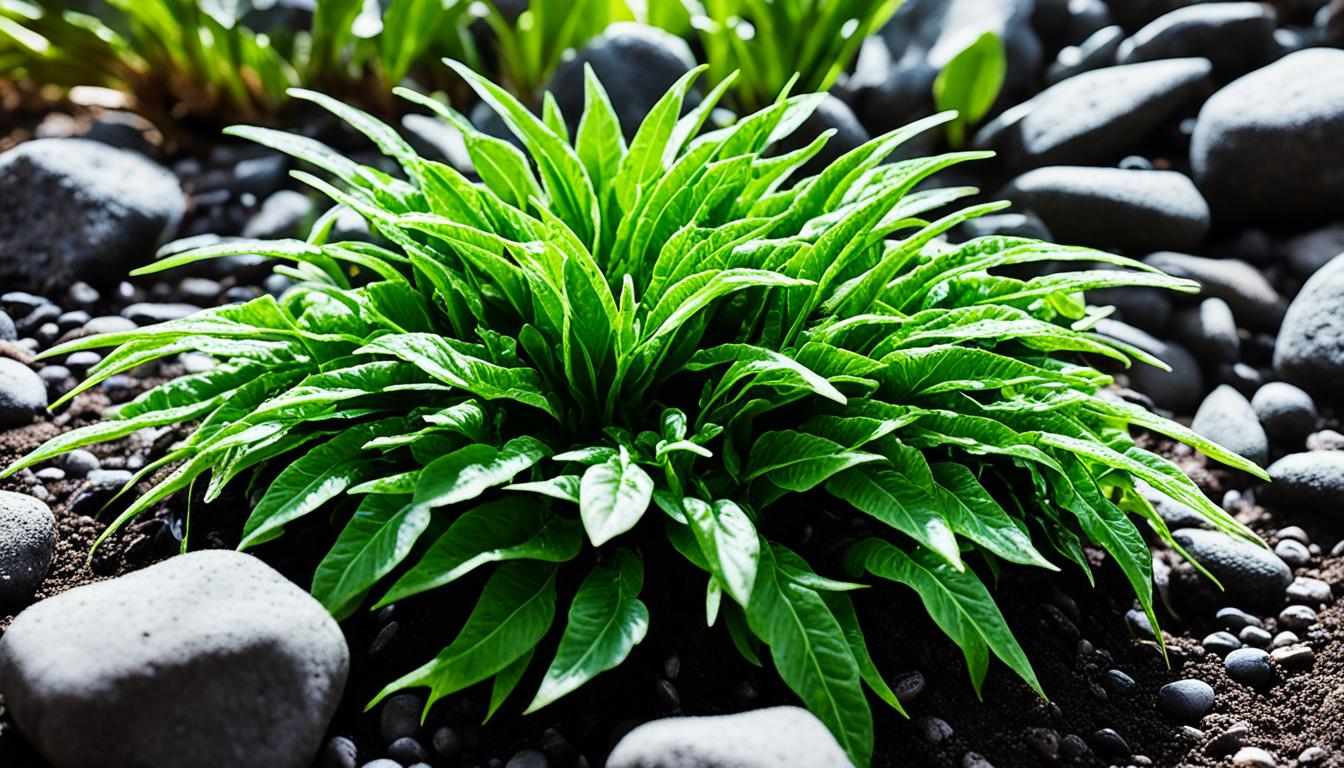
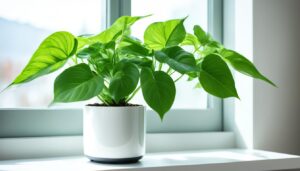
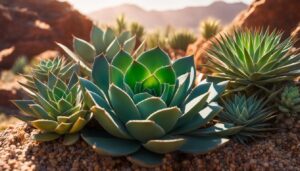
Pingback: Maximizing Plant Growth: Choosing the Ideal Windows for Your Indoor Garden – Trusted House Plant Guide